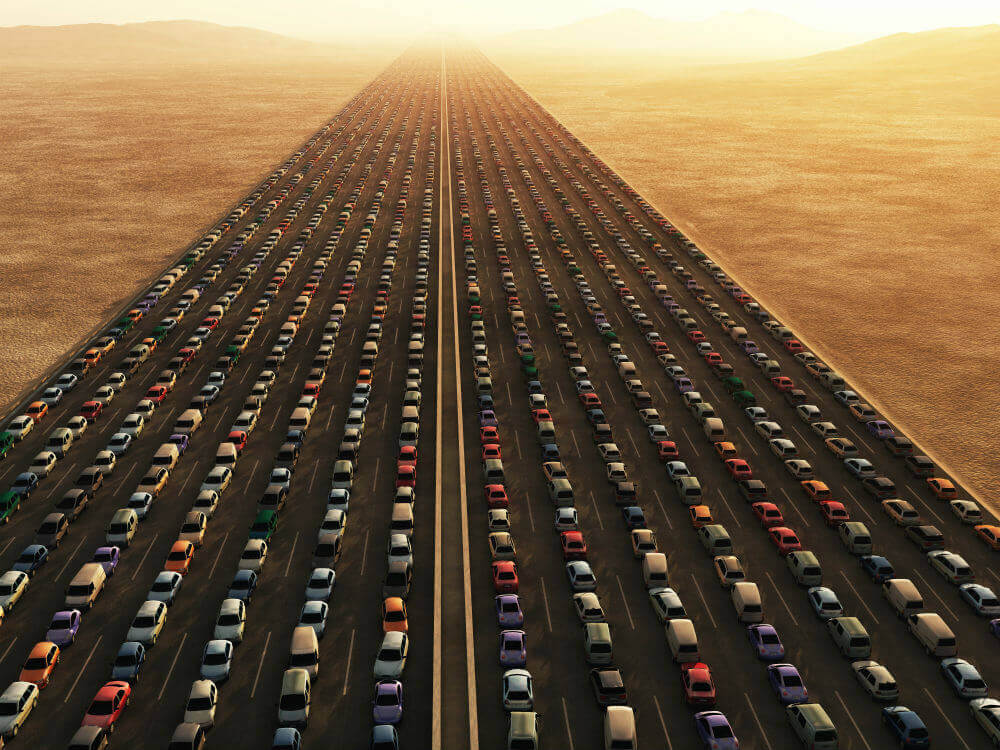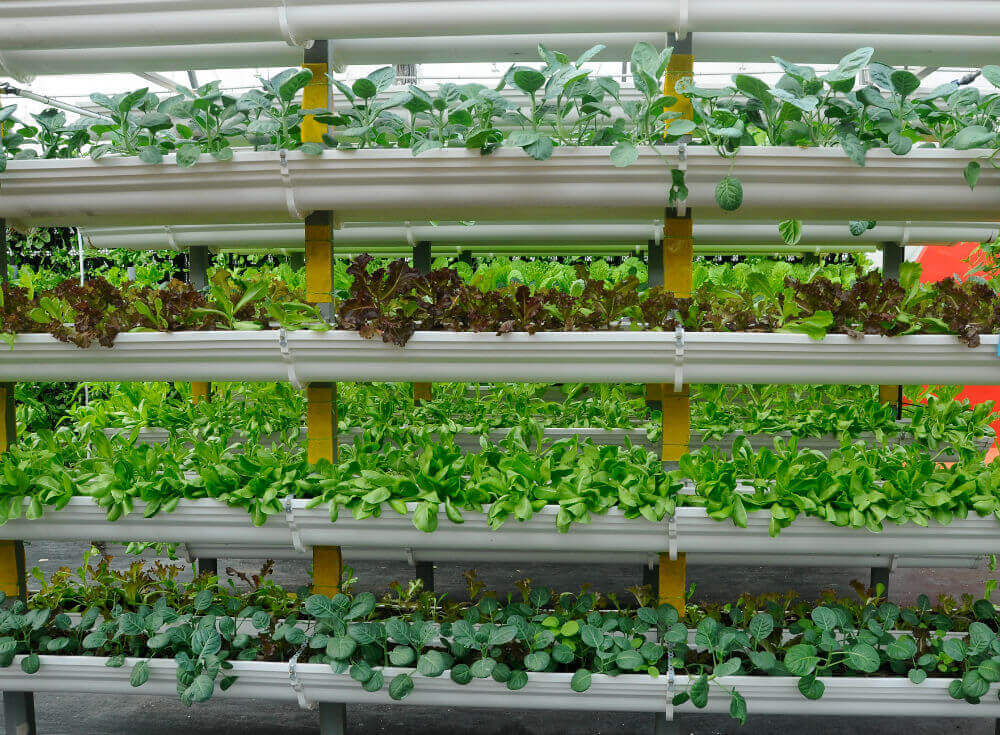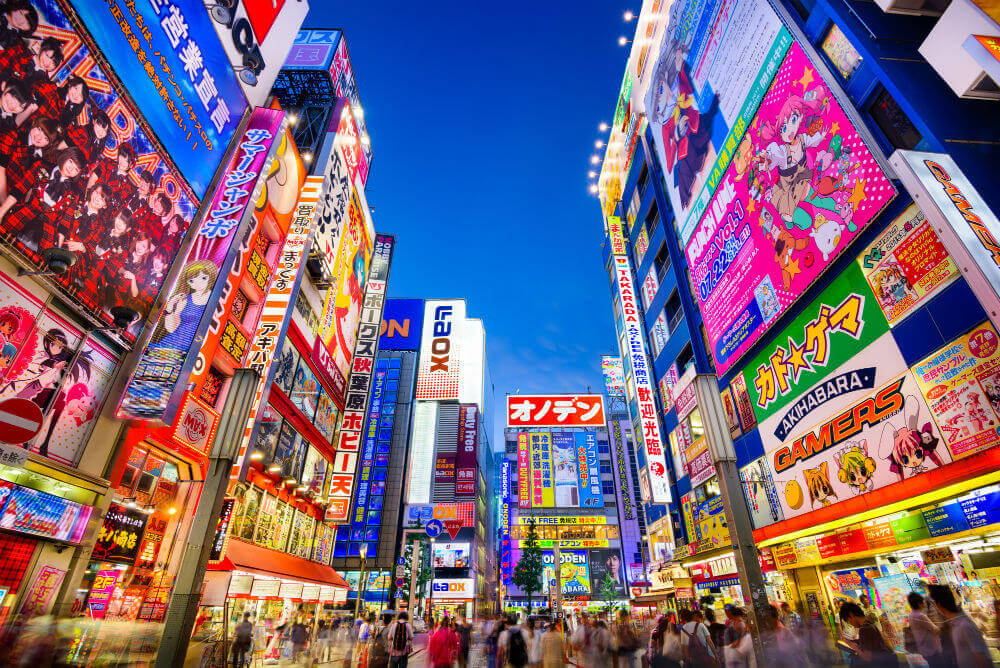APRIL 26, 2018
The worst everyday air pollutants — and what they do to our bodies
Here's how some of the most common air pollutants are created and the effect they have on our bodies.

Air pollution isn't always evident when we look up, but it's effects are clear. (Photo: GUNMANPHOTO/Shutterstock)
The Clean Air Act of 1970 and other measures have gone a long way toward improving the air we breathe. According to the American Lung Association's State of the Air 2017, in the 25 U.S. cities with the worst ozone and year-round particle pollution, most saw improvements from last year. Many of these cities achieved their lowest levels of those pollutants in the 18 years of the study.
Still, more than four out of 10 Americans have unhealthy air in their communities. "While most of the nation has much cleaner air quality than even a decade ago," the report says, "many cities reported their highest number of unhealthy days since the report began, including some that experienced extreme weather events."
Air pollution continues to kill — a 2014 report from the World Health Organization estimates that 7 million people died from it in 2012 — and otherwise wreak havoc with our health in ways that are still being discovered. Let's take a look at some of the worst air pollutants continuing to make their mark on our atmosphere — and our bodies.
The particulars of particulate matter
Particulate matter is like virus in a zombie movie — it seems containable in small doses until, one day, you’re sneezing brown slime out of your ears and looking for the nearest underground bunker. Described by the Environmental Protection Agency (EPA) as a complicated mixture of small particles and liquid droplets, it is made up of the soot created by our industrial world. Particle pollution includes “acids (such as nitrates and sulfates), organic chemicals, metals, and soil or dust particles.” Particulate matter is created from factories and cars, but also through natural events like forest fires and dust storms.
What particulate matter does to us: Particles that are 10 micrometers in diameter or smaller are the key because these are the particles that make their way through your nostrils into your lungs — even into your blood stream. The impact on the human body can be aggravated asthma, irregular heartbeats, decreased lung function, increased coughing, nonfatal heart attacks and premature death, according to the EPA.
A study issued during the American Thoracic Society's annual convention in early May even showed a possible link between air pollution and poor sleep. According to the study of more than 1,800 people, conducted by researchers at the University of Washington, people with the highest levels of fine-particle pollution (known as PM 2.5) over a five-year period had an almost 50 percent increased likelihood pf poor sleep, compared with those with the lowest levels of PM 2.5.
The study also looked at nitrogen dioxide (the authors call it "traffic-related pollutant gas") and its effect on sleep efficiency. It found over a five-year period, those with high nitrogen dioxide levels are 60 percent more likely to sleep worse than those with low levels.
Among other problems, a lack of sleep can lead to an increased likelihood of cardiovascular disease, according to the American Sleep Foundation.
The creep of carbon monoxide
Our car engines love combustion, but our lungs? Not so much. Moving engines not only spew nitrogen dioxide but deadly carbon monoxide, which is why you tend to see those skull-and-crossbones signs in parking garages. Our cars, trucks and other moving objects tend to be the largest emitters of carbon monoxide.
What carbon monoxide does to us: Not only is carbon monoxide dangerous, its effects read like something out of science fiction. When we breathe in invisible, odorless carbon monoxide, it replaces the oxygen in our blood. It reduces the amount of oxygen that reaches the body’s vital organs, resulting in brain damage, heart problems, and even behavioral and personality changes. And if we breathe in too much carbon monoxide, we can slip out of consciousness and never wake up.
Ozone and you
We hear a lot about ozone, but what exactly is this noxious gas? There’s the ozone that resides in the upper stratosphere, preventing us from being microwaved like popcorn by the sun. Then there’s ground-level ozone, which comes from industrial sources, but not directly. Burning fossil fuels like oil, coal and gas produces nitrogen oxides and volatile organic compounds. These chemicals react with heat and sunlight, producing another type of ozone: smog.
What ozone does to us: Breathing ozone causes shortness of breath, asthma, chest pain and premature death. The American Lung Association notes that the most vulnerable to ozone are children, the elderly, people with lung disease — and otherwise healthy people who spend a lot of time outdoors.
The danger of sulfur dioxide
Sulfur dioxide is a gas that leans heavily from industrial origins — the EPA notes that 73 percent of sulfur dioxide emissions are created by combustion at coal-fired power plants. Coal contains sulfur, which is released when it's burned. The gas forms when sulfur combines with oxygen. It also is a contributor to our old friend particulate matter and is a major factor in the creation of acid rain.
What sulfur dioxide does to us: Sulfur dioxide acts as an extreme lung irritant, causing shortness of breath and wheezing. Long-term exposure impairs the lungs’ ability to function. Children, older adults and those with respiratory impairments like asthma are the most vulnerable to sulfur dioxide.
Lead: A laundry list of ailments
Lead is a metal that used to be primarily spewed into our airways courtesy of cars. But due to increased regulation of lead in gasoline, emissions have greatly declined in the past two decades, according to the EPA. Still, lead smelters and piston-engine aircraft relying on leaded gasoline still emit the toxic metal into the air.
What lead does to us: Lead levels have declined in past years, but the substance still presents a danger to us — because a little lead goes a long way. Like carbon monoxide, lead impairs the blood’s ability to carry oxygen. And that’s not all. As the EPA reports, “depending on the level of exposure, lead can adversely affect the nervous system, kidney function, immune system, reproductive and developmental systems and the cardiovascular system.”
Editor's note: This story was originally published in October 2012 and has been updated with more recent information.





